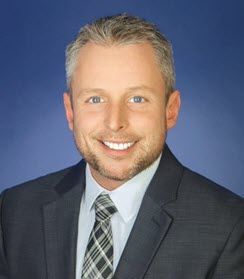Mortgage product manager
Commerce Bank
Kansas City, Missouri

This interview is one of five conducted for an article about home repair in the Tenth District. The full article offers background information and links to all interviews.
The Kansas City Fed does not endorse any specific products or services.
In 2020, Commerce Bank launched its new affordable financing options for borrowers in LMI census tracts. Eric Nelson oversees community lending efforts at Commerce.
Q: Why did you develop the new financing options? What need were they intended to fill?
A: We found that there were two main hurdles when it came to getting a first mortgage. One was the lack of a down payment, and the other was past credit mistakes or credit history. So we created the first mortgage product based on those two key factors. It offers up to 100% financing. We only look at a 12-month credit history to see if the homebuyer has had 30-day late payments in the past 12 months.
Q: Sometimes it just takes a relatively little money to maintain or repair a home. It can be hard to get loans in smaller amounts.
A: The other new loan option focuses on small balances, $5,000-$10,000 loans that can be used for any home repair or to help consolidate high-interest debt.
The interest rate is geared more like a first mortgage interest rate. There’s not an interest rate bump for being in a second lien position. That comes in handy. Most contractors, if they offer financing, offer interest rates that are usually in the 20% and sometimes the 30% range for a short-term loan. That makes them unaffordable. This is an alternative to those high-interest-rate loans that are due in three years with high monthly mortgage or higher required payments.
Q: How did you decide to address this issue?
A: After talking to community partners like CHES, Inc. and others, we discovered there was a need for this type of small-dollar loan program to pay for home repairs and typical home maintenance projects. For example, we knew that home repairs help elderly homeowners age in place. Making those home repairs that affect habitability such as a new hot water heater or furnace, allow homeowners who are on a fixed income to afford repairs and stay in the home. And we knew the alternative loan products on the market weren’t affordable options. Ten thousand dollars is not really a whole lot of risk, and it puts customers in a better situation. We know that keeping up on home repairs helps strengthen communities. We also heard a lot of people are inheriting properties, but it needs some additional repair to be livable. They’re not financially prepared to take on this additional expense.
Q: What are you seeing in terms of repayment?
A: We’ve done a little over 100 of the new kinds of loans in the last two years. On the small balance side of things, there is very, very low delinquency.
Q: Is there a homeowner whose story has stuck with you?
I do know of one story in particular, a recent loan. The homeowner used the funds to make his home more accessible because the co-borrower uses a wheelchair for mobility. The customer is so grateful for what we were able to do for him. He sent us videos of the home's improvements, like wider doors, bathroom railings, ramps outside, and a wraparound porch to accommodate his living situation.
Q: When you think about what might help people better afford to rehab their homes, what comes to mind?
A: Renovation loans could help with rehabbing homes, but there are barriers to that. There is the appraisal gap issue (the difference between how much a home was appraised for and how much you owe on it). Some homes in LMI communities need major work, costing more money than the home will be worth after the renovation. We can’t lend more than the home will be worth. But if there was a solution for that appraisal gap, a renovation loan, you could revitalize a ton of neighborhoods.
